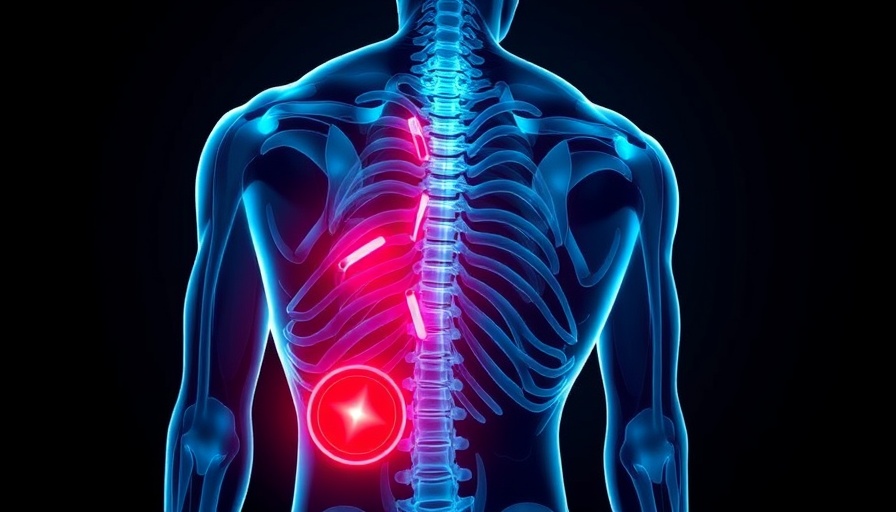
Unlocking the Mystery of Chronic Back Pain
Chronic back pain remains a significant health challenge in Europe, impacting over 80 million people and leading the charge as a primary cause of disability. With the definition of chronic pain extending beyond three months, the implications on quality of life and healthcare expenses are staggering. Recent studies offer a glimmer of hope, pointing to muscle composition as a potential biomarker that could be pivotal in understanding and treating this widespread issue.
How Muscle Composition Influences Pain Perception
According to the latest research, the relationship between muscle tissue and chronic back pain indicates that changes in muscle composition could play a substantial role in the onset and persistence of long-term pain. For example, reduced muscle mass and altered body mechanics from muscle imbalances may lead to increased strain on the spine and surrounding structures. For millions suffering from chronic back pain, these findings could usher in a new era of targeted diagnostics and therapies tailored to their specific tissue makeup.
Economic Impact of Chronic Back Pain
The repercussions of chronic back pain extend far beyond personal suffering. This condition not only affects physical activity levels but also results in emotional distress and significant economic costs due to lost productivity, increased medical bills, and diminished quality of life. In practical terms, effective treatment options stemming from advancements in muscle composition studies could save healthcare systems billions and dramatically improve patient outcomes.
Emerging Diagnostic Tools on the Horizon
As researchers continue to delve deeper into this innovative area, the potential for developing new diagnostic tools aimed at assessing muscle composition is on the rise. Non-invasive imaging techniques, such as MRI and ultrasound, could provide insights into muscle health, opening the door for tailored treatment approaches. This marks a shift in how chronic back pain is understood—moving towards a more physiological perspective rather than solely symptom-based approaches.
The Emotional Toll of Chronic Back Pain
For those battling chronic back pain, the emotional and psychological consequences are as debilitating as the physical aspect. Feelings of isolation, frustration, and helplessness often accompany prolonged pain. Recognizing the multifaceted nature of chronic pain highlights the importance of a holistic approach to treatment, one that encompasses both physical rehabilitation and mental health support.
Future Insights and Opportunities for Prevention
As we look to the future, understanding muscle composition as a biomarker continues to foster hope not only for treatment but also for prevention strategies. Lifestyle modifications, including exercise and nutrition, could be designed based on individual muscle composition profiles, paving the way for proactive measures against chronic back pain before it manifests.
In conclusion, ongoing research into muscle composition may not only provide new preventative and treatment strategies for the 80 million Europeans suffering from chronic back pain but could also enhance overall well-being and economic productivity in the region. By embracing these insights, both patients and healthcare professionals can look forward to a more informed approach to managing this pervasive condition.
 Add Row
Add Row  Add
Add 




Write A Comment